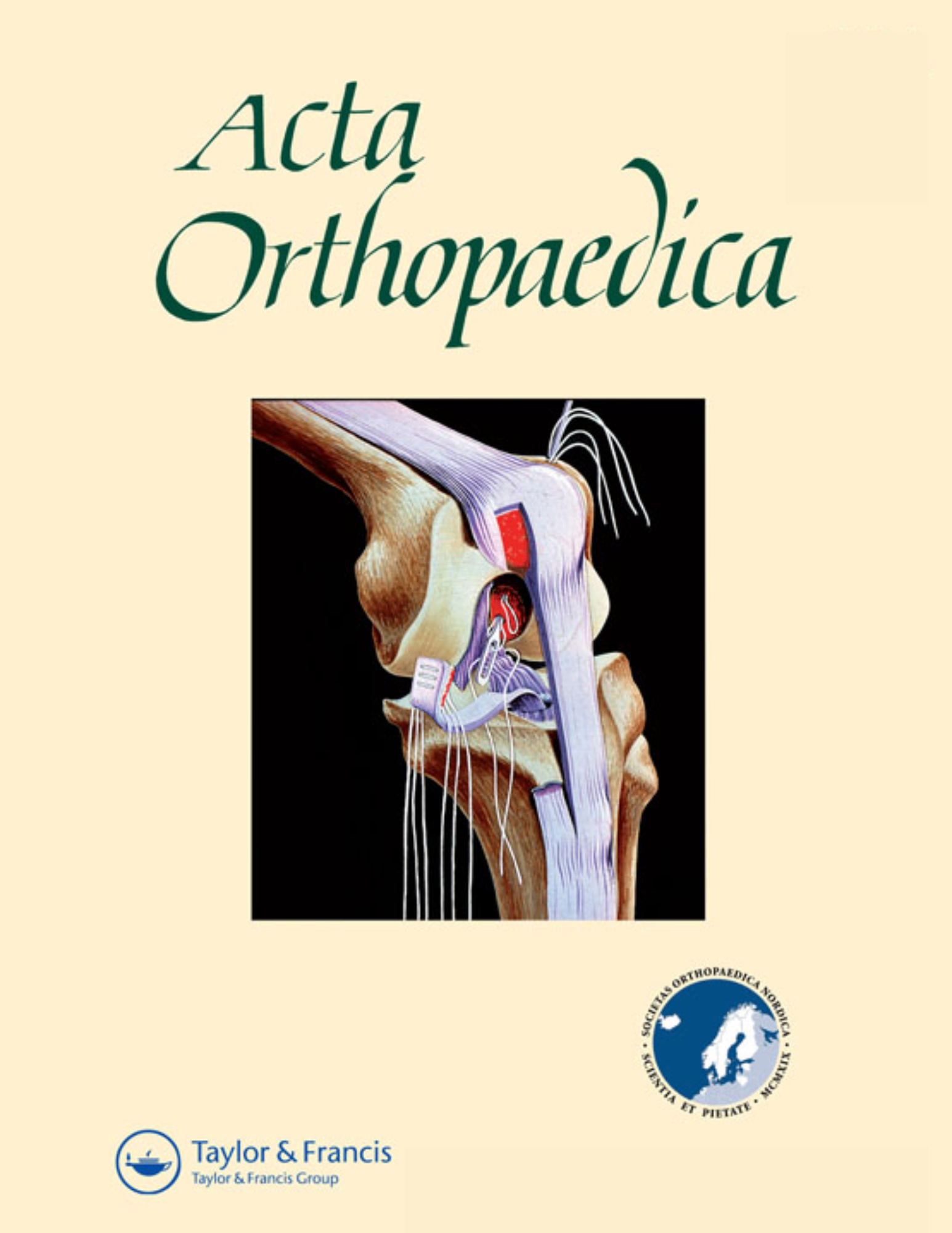
Local infiltration analgesia does not reduce PCA use after periacetabular osteotomy

Local infiltration analgesia does not reduce PCA use after periacetabular osteotomy
Local anesthetic wound infiltration for pain management after periacetabular osteotomy. A randomized, placebo-controlled, double-blind clinical trial with 53 patients
Acta Orthop. 2014 Apr;85(2):141-6Synopsis
Seventy patients scheduled to undergo periacetabular osteotomy were randomized either to receive or not receive local infiltration analgesia (LIA) with ropivacaine intra- and postoperatively. As all patients were treated with opioid based patient-controlled analgesia (PCA) postoperatively, the purpose was to determine whether LIA was effective at reducing the need for PCA (oxycodone) postoperatively. Over the first 4 postoperative days, there was no significant difference between groups in oxycodone consumption.
Was the allocation sequence adequately generated?
Was allocation adequately concealed?
Blinding Treatment Providers: Was knowledge of the allocated interventions adequately prevented?
Blinding Outcome Assessors: Was knowledge of the allocated interventions adequately prevented?
Blinding Patients: Was knowledge of the allocated interventions adequately prevented?
Was loss to follow-up (missing outcome data) infrequent?
Are reports of the study free of suggestion of selective outcome reporting?
Were outcomes objective, patient-important and assessed in a manner to limit bias (ie. duplicate assessors, Independent assessors)?
Was the sample size sufficiently large to assure a balance of prognosis and sufficiently large number of outcome events?
Was investigator expertise/experience with both treatment and control techniques likely the same (ie.were criteria for surgeon participation/expertise provided)?
Yes = 1
Uncertain = 0.5
Not Relevant = 0
No = 0
The Reporting Criteria Assessment evaluates the transparency with which authors report the methodological and trial characteristics of the trial within the publication. The assessment is divided into five categories which are presented below.
1/4
Randomization
3/4
Outcome Measurements
4/4
Inclusion / Exclusion
4/4
Therapy Description
4/4
Statistics
Detsky AS, Naylor CD, O'Rourke K, McGeer AJ, L'Abbé KA. J Clin Epidemiol. 1992;45:255-65
The Fragility Index is a tool that aids in the interpretation of significant findings, providing a measure of strength for a result. The Fragility Index represents the number of consecutive events that need to be added to a dichotomous outcome to make the finding no longer significant. A small number represents a weaker finding and a large number represents a stronger finding.
Why was this study needed now?
Postoperative pain is often considerable following periacetabular osteotomy, requiring analgesia. Current methods of pain management include a psoas block, patient-controlled analgesia (PCA), and continuous epidural and spinal analgesia. While these treatments often lower pain experienced postoperatively, their associated side-effects have prompted researchers to consider alternative methods. Local infiltration analgesia has demonstrated efficacy in total knee and hip arthroplasty procedures, although its role in periacetabular osteotomy has yet to be established.
What was the principal research question?
What is the efficacy of local infiltration analgesia (LIA) with ropivacaine for postoperative analgesia following periacetabular osteotomy, assessed over the first 4 postoperative days?
What were the important findings?
- There were no significant differences between the LIA and placebo group for oxycodone consumption over the first 4 PODs (POD1 p=0.66; POD2 p=0.86; POD3 p=0.57; POD4 p=0.85).
- VAS pain scores at rest were similar between groups 6h after surgery and on POD 1 (p=0.1 and 0.2, respectively). The LIA group demonstrated significantly lower mean pain scores at rest than the placebo group on POD2 (24 vs. 31), POD3 (19 vs. 31) and POD4 (18 vs. 28) (p<0.05).
- No significant differences in the TUG test or pain after the TUG test were noted between groups for the duration of the 4-day observation period (all p>0.05).
- Antiemetic use was similar between groups for the duration of the placement of the catheter.
What should I remember most?
Consumption of patient-controlled analgesia following periacetabular osteotomy was not decreased with the infiltration of ropivacaine at the end of surgery and for 2 days postoperatively.
How will this affect the care of my patients?
From these findings, it would appear that local infiltration of ropivacaine alone is not sufficient to reduce the need for patient-controlled analgesia after periacetabular osteotomy, and that adverse events associated with opioid PCA (postoperative nausea and vomiting) would not be expected to decrease from its implementation. Whether LIA ropivacaine is an efficacious component in mulitmodal analgesia for periacetabular osteotomy remains to be determined in future studies.
Learn about our AI Driven
High Impact Search Feature
Our AI driven High Impact metric calculates the impact an article will have by considering both the publishing journal and the content of the article itself. Built using the latest advances in natural language processing, OE High Impact predicts an article’s future number of citations better than impact factor alone.
Continue



 LOGIN
LOGIN

Join the Conversation
Please Login or Join to leave comments.